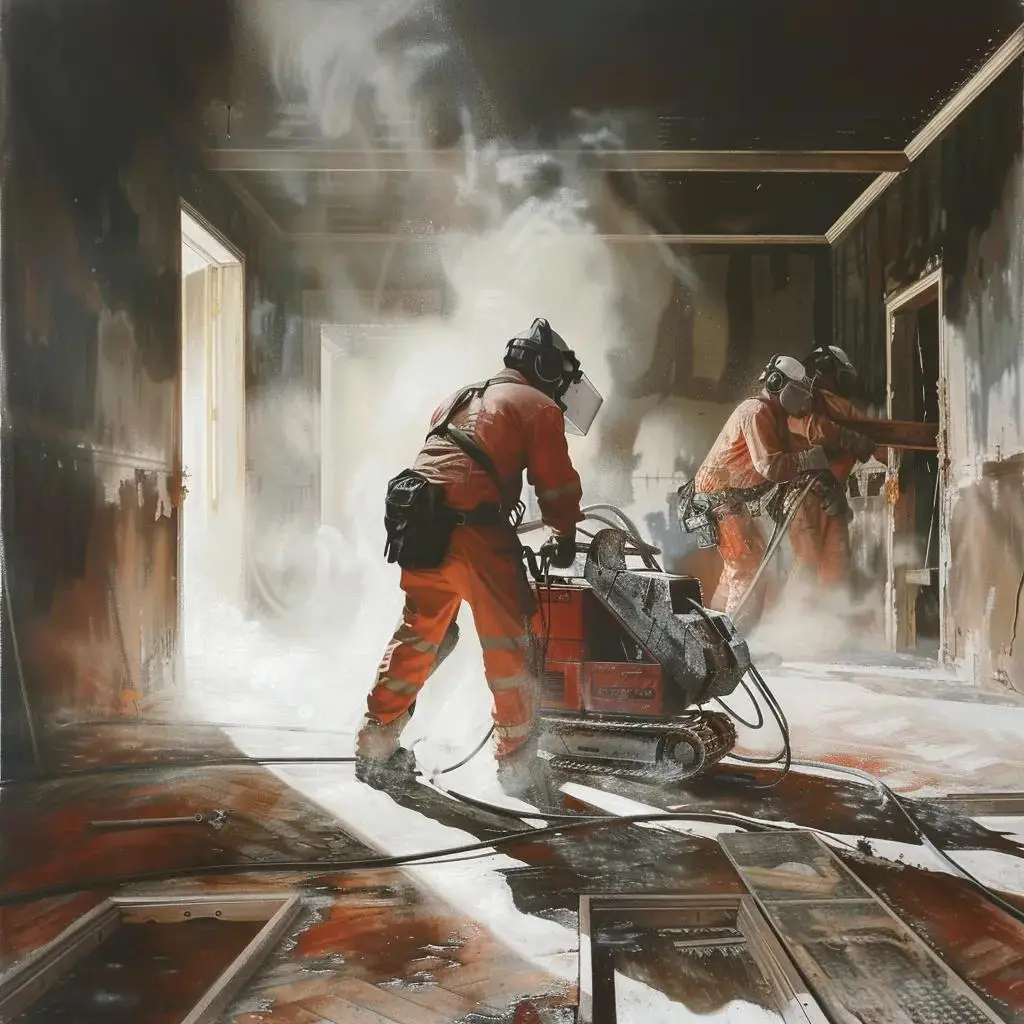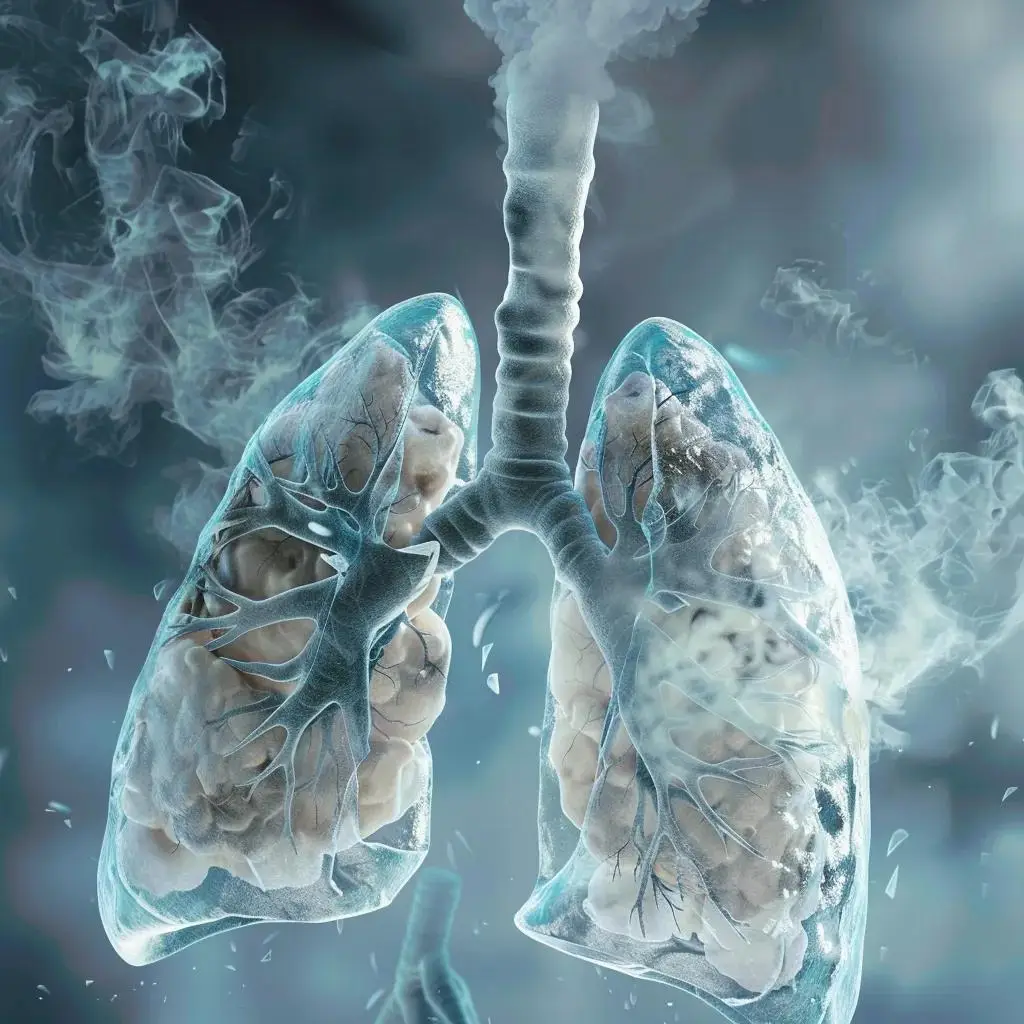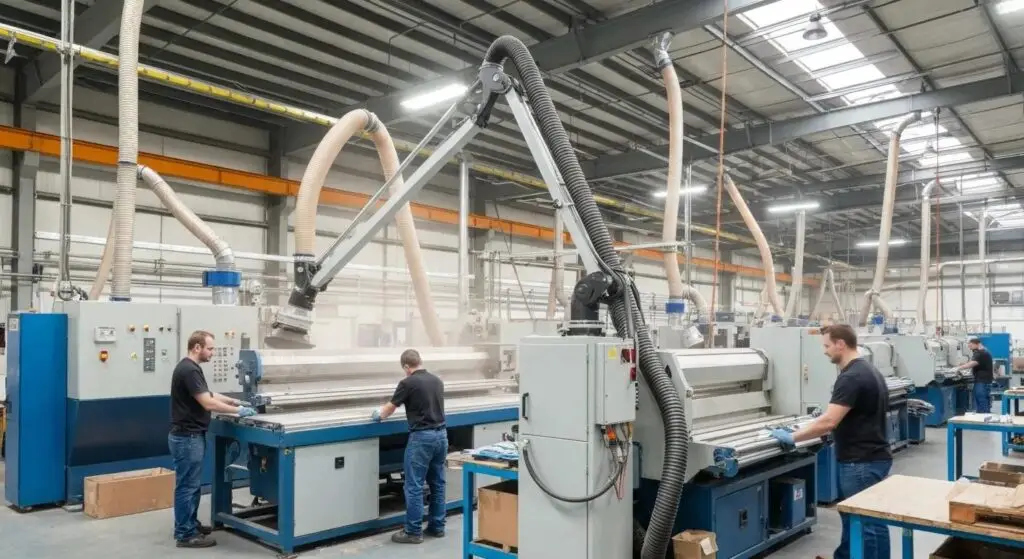
Article: What Are the Health and Safety Risks of Choosing Non-Dustless Methods for Floor Removal Projects?
Every traditional floor removal method kicks up invisible crystalline silica dust that can linger for years. In this guide, you’ll learn the health and safety risks of choosing non-dustless methods for floor removal projects and how modern dustless solutions can protect your home and workforce. We’ll define crystalline silica dust, explain major diseases from exposure, reveal hidden cleanup costs, compare dustless technology benefits, and cover key OSHA and NIOSH guidelines.
What Is Crystalline Silica Dust and Why Is It Dangerous in Floor Removal?
Crystalline silica dust is a microscopic mineral particle released when cutting or breaking concrete, tile, and masonry. It penetrates deep into lung tissue and resists natural clearance, posing serious respiratory risks. The following list highlights why this dust demands special attention:
- Fine particle size allows deep lung penetration during demolition.
- Chemical stability prevents natural breakdown in the lungs.
- Classification as a human lung carcinogen by OSHA underscores its danger.
Each property explains how airborne silica can harm occupants and workers from uncontrolled traditional floor removal.
What Materials Release Crystalline Silica Dust During Floor Removal?
Tile, concrete, mortar, grout and stone all contain crystalline silica, and demolition tools shatter them into respirable particles. Dustless tile removal can significantly reduce the health risks associated with these particles.
How Does Traditional Floor Removal Make Silica Dust Airborne?
Mechanical grinders and jackhammers generate high-speed friction that fractures silica-containing materials without capturing the dust at its source.
Why Is Crystalline Silica Dust a Serious Health Hazard?
Because respirable silica lodges in alveoli, continuous exposure triggers inflammation, fibrotic scarring, and increased disease risk in otherwise healthy individuals.
What Are the Major Health Risks from Exposure to Silica Dust?

Inhalation of crystalline silica dust leads to progressive diseases that often lack cure. The table below links each condition to its cause and outcome:
| Disease | Cause | Long-Term Effect |
|---|---|---|
| Silicosis | Inhalation of respirable silica | Progressive lung scarring |
| Lung Cancer | DNA damage from chronic exposure | Increased risk of mortality |
| COPD | Chronic airway inflammation | Reduced pulmonary function |
These outcomes show why minimizing dust exposure is essential for long-term health.
Health Risks of Silica Exposure
Exposure to crystalline silica dust can lead to serious health problems, including silicosis, lung cancer, and COPD. These diseases can significantly impact an individual’s quality of life and overall health.
This citation supports the article’s claims about the health risks associated with silica dust exposure.
What Is Silicosis and How Does It Develop?
Silicosis develops when inhaled silica triggers a fibrotic response in lung tissue, leading to breathlessness and irreversible scarring.
How Does Silica Dust Increase Lung Cancer and COPD Risks?
Persistent inflammation from silica inhalation damages DNA and airway structures, elevating the probability of cancer and chronic obstruction.
What Other Diseases Are Linked to Silica Dust Exposure?
Exposed individuals also face higher risks of kidney disease, autoimmune disorders, and exacerbated asthma due to systemic inflammatory responses.
What Are the Hidden Costs and Safety Issues of Traditional Floor Removal Methods?
Beyond health hazards, dusty demolitions inflate budgets and prolong downtime. Consider these hidden costs:
- Dust infiltration into HVAC systems drives up maintenance expenses.
- Extended cleanup often requires professional services post-removal.
- Uncontrolled debris can damage walls, furniture, and finishes.
These factors reveal how traditional methods can exceed original estimates and compromise safety.
How Does Dust from Traditional Removal Affect Indoor Air Quality?
Airborne silica and fine dust settle on surfaces and circulate through HVAC systems, degrading indoor air quality long after work ends. For more information, you can visit our blog.
What Are the Cleanup and Property Damage Risks?
Without source capture, particles embed in cracks and crevices, requiring multiple deep cleans to restore a safe living or work environment.
Why Is DIY Floor Removal Risky for Health and Safety?
Non-professionals often lack proper respiratory protection, containment protocols, and specialized tools, greatly increasing exposure and injury likelihood.
How Does Dustless Floor Removal Technology Protect Health and Improve Safety?

Dustless floor removal uses targeted vacuum systems to intercept particles immediately, preventing airborne escape and surface contamination. Equipment from fla-demo.com captures dust at the cutting head, ensuring a cleaner and safer process:
| Feature | Mechanism | Benefit |
|---|---|---|
| High-powered vacuum | Captures dust at the cutting head | Eliminates most airborne particles |
| HEPA filtration | Traps 99.97% of fine silica | Ensures clean breathing air |
| Mobile dust containment | Units follow operators on-site | Reduces setup and turnaround time |
This approach safeguards health and streamlines project cleanup with industry-leading efficiency—see detailed benefits of dustless floor removal.
How Does Dustless Technology Capture Silica Dust at the Source?
Specialized vacuums connect directly to grinders or saws, creating negative pressure that draws dust into sealed filters before it escapes.
What Are the Health Benefits of Using Dustless Floor Removal?
Regular use prevents chronic lung conditions, lowers carcinogen exposure, and maintains indoor air quality for residents and staff.
How Does Dustless Removal Improve Project Efficiency and Cleanliness?
By eliminating most cleanup steps, teams save hours on debris removal and can complete projects faster with minimal interruption.
How Do OSHA and NIOSH Guidelines Relate to Silica Dust and Floor Removal Safety?
OSHA sets a Permissible Exposure Limit (PEL) of 50 μg/m³ over an 8-hour shift, while NIOSH recommends a 50 μg/m³ time-weighted average to minimize disease risk. Meeting these standards demands rigorous dust controls and monitoring.
OSHA's Permissible Exposure Limit for Silica
OSHA sets a Permissible Exposure Limit (PEL) for respirable crystalline silica to protect workers from overexposure. This limit is crucial for maintaining a safe working environment and preventing long-term health issues associated with silica inhalation.
This citation supports the article’s discussion of OSHA’s guidelines and the importance of adhering to safety standards.
What Are OSHA’s Permissible Exposure Limits for Crystalline Silica?
OSHA’s PEL of 50 micrograms per cubic meter of air ensures worker exposure stays within legally defined safety margins.
How Does NIOSH Recommend Protecting Against Silica Dust?
NIOSH advocates engineering controls, such as water suppression and dustless systems, combined with respiratory protection and air monitoring.
NIOSH Recommendations for Silica Dust Control
NIOSH recommends a comprehensive approach to controlling silica dust exposure, including engineering controls, respiratory protection, and air monitoring. These measures are essential for minimizing worker exposure and reducing the risk of silica-related diseases.
This citation provides further detail on the recommendations made by NIOSH to protect workers from silica dust exposure.
How Can Dustless Floor Removal Help Meet These Safety Guidelines?
- It captures silica at the source to maintain PEL/REL thresholds.
- It reduces reliance on PPE alone by providing engineering controls.
- It simplifies compliance documentation and air quality testing.
Refer to OSHA and NIOSH silica guidelines for full compliance details.
Every step you take with proper dustless equipment dramatically reduces health risks, hidden costs, and regulatory hurdles. For expert dustless floor removal services tailored to your needs, explore the benefits of our certified teams at fla-demo.com. Trust specialized contractors to protect your investment and breathing air quality with cutting-edge dustless solutions.



